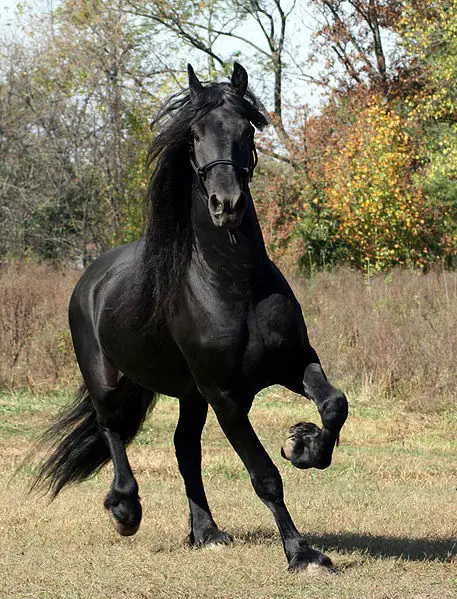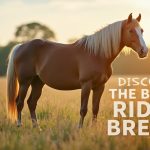European horse breeds are diverse and rich in history. They vary greatly in size, temperament, and purpose.
European horse breeds have played significant roles in history, culture, and economy. Each breed brings unique characteristics, making them suitable for various activities like racing, work, and companionship. The Andalusian from Spain is famed for its elegance and agility. The Friesian from the Netherlands is known for its strength and striking appearance.
The Irish Draught excels in versatility, often used in farming and sport. Each breed has distinct qualities, contributing to their popularity across Europe and beyond. Enthusiasts and breeders cherish these horses for their unique traits, historical significance, and adaptability in different equestrian disciplines.
Thoroughbred
The Thoroughbred horse breed began in the 17th century in England. Three foundation sires started the breed: the Darley Arabian, the Godolphin Arabian, and the Byerley Turk. These horses were crossed with native mares. The goal was to create faster and stronger horses. Today, Thoroughbreds are known worldwide. They are used mainly in horse racing.
Thoroughbreds are tall and slim. They have long legs and a deep chest. Their heads are refined with large eyes. They are known for their speed and agility. A typical Thoroughbred stands about 15 to 17 hands high. They come in many colors, including bay, chestnut, and gray. Their temperament is spirited and lively. They need experienced handlers due to their high energy.

Credit: www.researchgate.net
Andalusian
The Andalusian horse has a rich history in Spain. It appears in many Spanish artworks and literature. Kings and nobles highly prized this breed. It played a key role in Spanish bullfighting. The horse’s elegance and strength made it popular in parades and ceremonies. The Andalusian also influenced other horse breeds. Its legacy continues to thrive today.
Andalusian horses are known for their graceful movements. They have a strong, muscular body. Their necks are long and arched. The breed usually has a gray or white coat. Their eyes are expressive and intelligent. Andalusians have a thick, flowing mane and tail. They are medium-sized horses, standing about 15 to 16 hands high.
Friesian
The Friesian horse is from the Netherlands. This breed is very old, dating back to the Middle Ages. Knights rode Friesian horses in battles. The breed almost disappeared but was saved by farmers.
Friesian horses are famous for their black color and flowing manes. They have a proud and elegant appearance. They are strong and can carry heavy loads.
Today, Friesian horses are used in many ways. They are popular in dressage and shows. Friesians are also used in movies and TV shows because they look stunning.
Many people love to ride Friesian horses for pleasure. Their gentle nature makes them perfect for beginners. They are also used in driving competitions and parades.
:max_bytes(150000):strip_icc()/strange-and-beautiful-horse-breeds-4864041_V2-0b85473eae7b48998063bf8835e19e0c.png)
Credit: www.treehugger.com
Lipizzaner
Lipizzaners are known for their royal heritage. These horses have a long history with European royalty. Many kings and queens loved them for their grace and strength. The Lipizzaner breed was often found in royal stables. They were also used in ceremonial events. Their elegant appearance made them a favorite among the nobility.
The training techniques for Lipizzaners are very special. Trainers use classical dressage methods. Young horses start training at a very early age. They learn basic movements first. Later, they practice more complex steps. Patience is key in training these horses. Trainers spend many years perfecting their skills. The result is a horse that moves with grace and precision.
Hanoverian
Renowned for their elegance and athleticism, Hanoverians are among Europe’s finest horse breeds. Known for versatility, they excel in dressage, show jumping, and eventing.
Breeding Programs
Hanoverian horses are known for their strict breeding programs. They focus on improving quality. Breeders use only the best stallions and mares. They must pass tough tests. This ensures strong, healthy foals.
Performance Abilities
Hanoverians excel in dressage and show jumping. They are also good in eventing. Their agility and strength help them win. Many top riders choose Hanoverians. These horses are calm and easy to train.

Credit: www.discoverthehorse.com
Irish Draught
The Irish Draught horse has deep roots in rural history. Farmers bred them for strength and stamina. These horses helped with plowing fields and transporting goods. They are known for their calm and gentle nature. This made them ideal for farm work. Irish Draughts were often part of family life on farms. They were trusted companions and hard workers.
Irish Draught horses are very versatile. They excel in many disciplines like jumping and dressage. These horses are also great for leisure riding. Their strong build and easy-going nature make them suitable for many tasks. They are often crossed with other breeds. This improves the performance of sport horses. Irish Draughts are a true all-rounder in the horse world.
Frequently Asked Questions
Why Is A Horse Called A Warmblood?
A horse is called a warmblood because it is a mix of hot-blooded and cold-blooded breeds, ideal for sport.
Are There Horses Native To Europe?
Yes, horses are native to Europe. The wild ancestor of modern horses, the European wild horse, lived there.
What Breed Of Horse Was In The European Forest?
The European forest horse, also known as the Tarpan, was a wild breed native to Europe. It became extinct in the 19th century. Efforts to recreate the Tarpan have led to breeds like the Heck horse.
Is A Friesian A Warmblood Horse?
No, Friesians are not considered warmblood horses. They are a distinct breed known for their unique characteristics.
Conclusion
European horse breeds offer a rich history and diverse characteristics. They excel in various disciplines and roles. These breeds have made significant contributions to equine culture and sports. Exploring European horse breeds enhances our appreciation for their unique qualities. Discover the beauty and versatility of these majestic animals.






